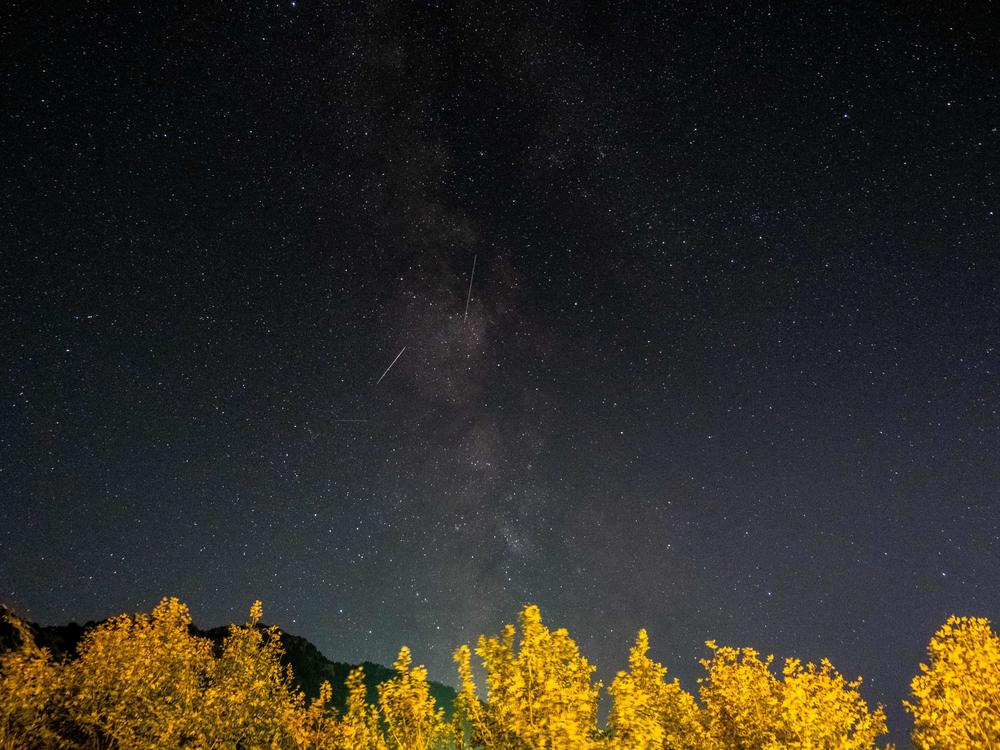Section Branding
Header Content
The Orionid meteor shower peaks this week, but it might not be much of a show
Primary Content
The Orionid meteor shower, which appears in the night sky around this time each year, is predicted to peak Thursday morning, according to NASA.
But don't get your hopes up for a cosmic show just yet.
This year's Orionid shower coincides with a full moon, whose bright glow will make it hard for us here on Earth to see the meteors.
"The Orionids are going to, frankly, suck this year," NASA meteor expert Bill Cooke told Space.com. "The moon will be up all night, from sunset to sunrise."
Meteors form from the rocky pieces left over after a comet flies past the sun. The showers occur when the Earth passes through one of those fields of debris. In the case of the Orionids, it's the ice and dust that's released by Halley's Comet when it enters the inner solar system, according to NASA.
Orionids are known for their speed, careening into Earth's atmosphere at about 148,000 mph. They're also characteristically bright. Put together, that means Orionid meteors can leave glowing "trains" behind them when they fly by and occasionally turn into fireballs.
Although the full moon may make it difficult to get the full meteor shower experience, you can still try to catch a glimpse Wednesday night into Thursday morning.
Here's what NASA recommends: After midnight, grab something comfortable, like a chair or a blanket, and stake out a spot away from city or street lights. Lie down with your feet facing southeast if you're in the Northern Hemisphere or northeast if you're in the Southern Hemisphere. Then, just look up and wait.
Copyright 2021 NPR. To see more, visit https://www.npr.org.
Bottom Content

